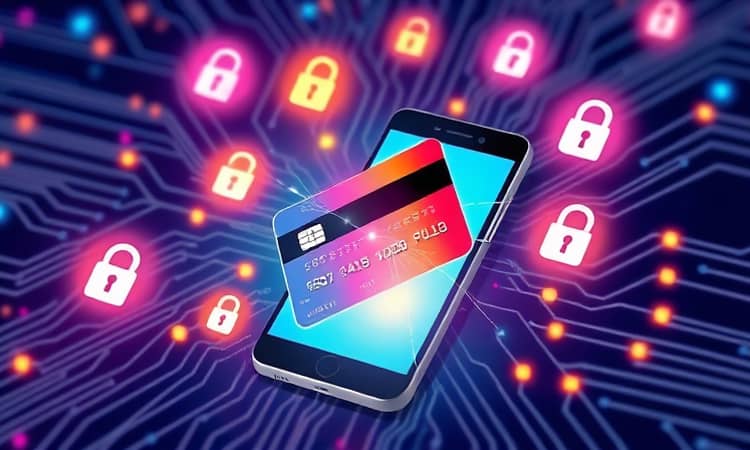Virtual Credit Cards: Enhancing Your Online Shopping Security

In an era where cyber threats lurk behind every click, protecting your financial details has never been more critical. Virtual credit cards offer a modern solution for safeguarding your online transactions and maintaining peace of mind.
What Are Virtual Credit Cards?
A virtual credit card is a secure alternative to your physical card, generating a temporary 16-digit number, expiration date, and CVV that link back to your main account. These cards exist solely in digital form and are tailored for online or over-the-phone transactions.
Instead of exposing your real card number to merchants, a virtual card stands in as a proxy. After completing a purchase, you can deactivate or let the card expire automatically, preventing any unauthorized future charges.
How Virtual Credit Cards Work
Virtual cards function through your existing credit account provider or a third-party platform. When you request one, the issuer instantly produces a unique card number and security code. From there, you can customize it to suit your needs.
- Set expiration dates for enhanced security—choose single-use or time-bound validity.
- Assign merchant-specific restrictions to ensure cards only work at chosen vendors.
- Limit spending with strict controls by defining maximum transaction amounts.
- Manage recurring payments smoothly by issuing longer-lived virtual cards when needed.
Key Security and Privacy Benefits
Adopting virtual credit cards brings an array of protections that conventional plastic simply cannot match:
- Minimize fraud risk in data breaches by never exposing your real card number.
- Shield your primary card information—compromised virtual cards can be replaced instantly.
- Control spending with fine-grained settings to block unauthorized or high-value purchases.
- Maintain anonymity with privacy-focused issuers that don’t reveal personal details to merchants.
Practical Use Cases
From casual online shoppers to enterprise finance teams, virtual credit cards adapt to a wide range of scenarios:
Limitations and Considerations
While virtual cards deliver robust protections, it’s important to balance expectations and recognize potential downsides:
In–person transactions often require a physical swipe or chip, meaning virtual-only cards won’t work at point-of-sale terminals, hotel check-ins, or car rental agencies. Be prepared to have a backup method on hand.
Short-lived cards can interrupt subscriptions if they expire before a billing cycle renews. To avoid service disruptions, issue a specific card with a longer validity span for ongoing payments.
Technical requirements—such as relying on a mobile app or browser extension—may pose minor hurdles for those less comfortable with digital tools. Checking your issuer’s compatibility is essential before committing.
Finally, not every financial institution offers virtual cards, particularly smaller banks or legacy credit programs. If this feature is pivotal, consider switching to a provider known for advanced digital services.
Getting Started with Virtual Cards
Ready to enhance your online security? Follow these simple steps to deploy your first virtual credit card:
- Choose a provider—use your bank’s app or a trusted third-party platform.
- Log in and locate the virtual card section in the digital portal.
- Configure details—set expiration, spending limit, and permitted merchants.
- Save your new card credentials securely, then use them for online purchases.
- Monitor activity through your billing statements or app notifications.
Future Trends and the Evolving Security Landscape
As online commerce grows, virtual credit cards are poised to become a standard security feature across financial products. Major issuers are integrating them directly into mobile wallets and banking apps, enabling seamless integration with digital wallets and improving accessibility for consumers.
Emerging standards in tokenization and real-time fraud detection will further bolster virtual card offerings. We can expect more advanced AI-driven fraud analytics and automatic risk scoring to accompany card generation, tailored to your individual needs.
Conclusion
Virtual credit cards represent a significant leap forward in online payment security. By temporarily masking your real card, granting you unprecedented control over spending, and offering quick replacement if compromised, they address many of the vulnerabilities inherent in e-commerce.
Whether you’re a casual shopper worried about a single purchase or a business streamlining vendor payments, virtual cards deliver a versatile, powerful defense against modern payment threats.
References
- https://www.privacy.com
- https://www.experian.com/blogs/ask-experian/are-virtual-credit-cards-safe/
- https://www.cnet.com/personal-finance/credit-cards/fraud-proof-your-online-purchases-why-virtual-cards-are-your-new-best-friend/
- https://www.paywithextend.com/resource/how-virtual-credit-cards-enhance-security-and-control
- https://ramp.com/blog/are-virtual-credit-cards-safe
- https://www.experian.com/blogs/ask-experian/pros-cons-virtual-credit-cards/
- https://allaboutcookies.org/what-is-a-virtual-credit-card
- https://www.standard.net/lifestyle/home_and_family/2024/nov/20/tech-matters-how-virtual-credit-cards-can-make-online-shopping-safer/






